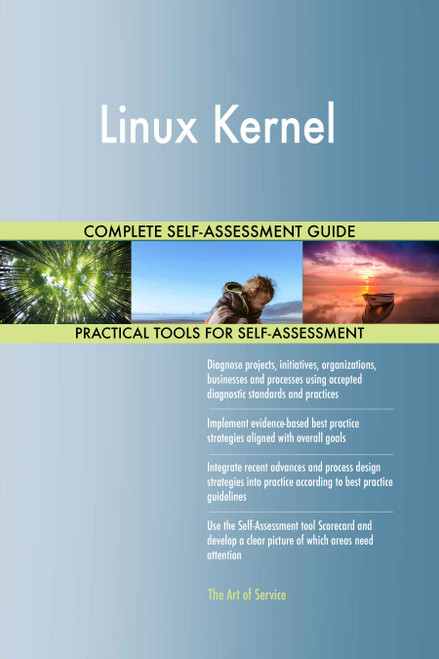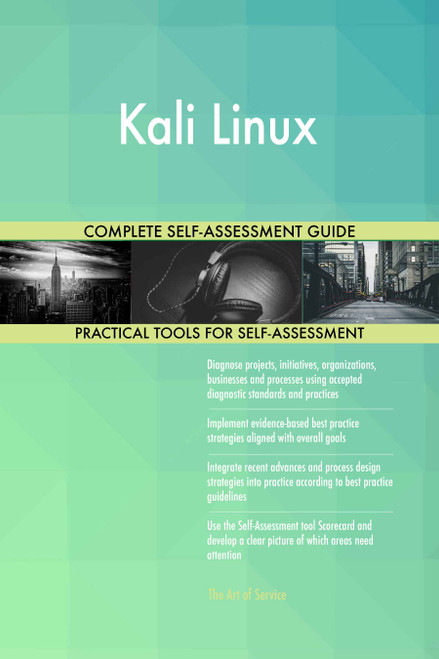Monitor, research, analyze, diagnose, and configure/manage Linux/Unix virtualization and Linux/Unix in virtualized environments to detect and respond to anomalies, vulnerabilities, and Cyber incidents.
More Uses of the Linux Toolkit:
- Perform Systems Administration functions on servers running Windows, Linux, and Windows/Linux workstations.
- Identify potential points of strength and vulnerability among Linux/Unix segments of a network map.
- Ensure you transform; build and execute and support the rollout of all patch/install strategy on Linux systems.
- Establish that your planning operates and monitors Windows Server and Linux based systems using established procedures.
- Resolve Linux system errors and crashes, disk space problems, huge file system and full disk errors.
- Be accountable for performing scans and remediating vulnerabilities in Linux and/or Windows environments.
- Methodize: patch Linux/Unix system vulnerabilities to ensure information is safeguarded against outside parties.
- Arrange that your enterprise participates in scanning and patching Windows/Linux systems using CyberSecurity Tools.
- Confirm your design complies; DevOps, knowledge in Linux/win admin and now understanding containerization Docker, Kubernetes.
- Ensure reliability and scalability of your multi datacenter and hybrid Linux environments.
- Oversee: hardware and software installations, upgrades, maintenance, Security Analysis and netWork Performance and tuning of Linux servers in a Virtual Infrastructure.
- Direct: System Administration and support responsibility for Windows/Linux server hardware and software.
- Ensure you collaborate; lead systems administrators, lead systems engineers and DevOps engineers (Windows, Linux, Unix and cloud).
- Manage work on complex projects involving Linux, Software Defined Storage, advanced Network Technologies, automation and monitoring.
- Supervise: review and analyze security logs from Linux, Windows, IDS/IPS, routers, Firewalls, file integrity, anti malware, web proxies, and other Security Tools.
- Ensure you foster; mid to advanced level Linux knowledge in a physical, virtual or public Cloud Environment.
- Ensure you improve; lead with expertise in Linux System Administration and in infrastructure support for Web Based Applications.
- Create, administer, and maintain virtual and physical servers running Windows and Linux based Operating Systems.
- Perform software installations and upgrades to Linux Operating Systems and layered software packages.
- Warrant that your operation demonstrates proven thought leader level abilities in administering Linux and Windows Operating System.
- Ensure you collaborate; lead with expertise in Systems Administration, Linux tools, Configuration Management in a large scale environment.
- Configure LDAP server and LDAP client on Linux machines for authorization and authentication.
- Arrange that your strategy complies; mentors (Independent Contractor) security Architecture Framework, Network Security, Linux security.
- Coordinate and provide oversight on the hosting, security, compliance and scanning of Digital Assets hosted on a Windows or Linux platform in order to validate the on going health of the environment.
- Detect exploit against targeted network and Linux/Unix hosts and react accordingly.
- Perform security review and identify gaps in Linux/Unix Environment Security architecture and develop a security Risk Management plan.
- Be accountable for developing applications running on Linux, or Unix like kernel based Operating System.
- Integrate systems with Windows and Linux as it applies to core service dependencies.
- Analyze identified malicious activity to determine weaknesses exploited, exploitation methods, effects on Linux/Unix systems and information.
- Analyze Linux/Unix file systems, permissions, and Operating System configurations in order to detect vulnerabilities and intrusions.
Save time, empower your teams and effectively upgrade your processes with access to this practical Linux Toolkit and guide. Address common challenges with best-practice templates, step-by-step Work Plans and maturity diagnostics for any Linux related project.
Download the Toolkit and in Three Steps you will be guided from idea to implementation results.
The Toolkit contains the following practical and powerful enablers with new and updated Linux specific requirements:
STEP 1: Get your bearings
Start with...
- The latest quick edition of the Linux Self Assessment book in PDF containing 49 requirements to perform a quickscan, get an overview and share with stakeholders.
Organized in a Data Driven improvement cycle RDMAICS (Recognize, Define, Measure, Analyze, Improve, Control and Sustain), check the…
- Example pre-filled Self-Assessment Excel Dashboard to get familiar with results generation
Then find your goals...
STEP 2: Set concrete goals, tasks, dates and numbers you can track
Featuring 999 new and updated case-based questions, organized into seven core areas of Process Design, this Self-Assessment will help you identify areas in which Linux improvements can be made.
Examples; 10 of the 999 standard requirements:
- To what extent does each concerned units Management Team recognize Linux as an effective investment?
- Which Linux solution is appropriate?
- When should you bother with diagrams?
- How do you plan on providing proper recognition and disclosure of supporting companies?âââ
- How will the Linux data be analyzed?
- How do you manage scope?
- How can a Linux test verify your ideas or assumptions?
- A compounding model resolution with available relevant data can often provide insight towards a solution methodology; which Linux models, tools and techniques are necessary?
- Have you identified breakpoints and/or Risk Tolerances that will trigger broad consideration of a potential need for intervention or modification of strategy?
- Have you made assumptions about the shape of the future, particularly its impact on your customers and competitors?
Complete the self assessment, on your own or with a team in a workshop setting. Use the workbook together with the self assessment requirements spreadsheet:
- The workbook is the latest in-depth complete edition of the Linux book in PDF containing 994 requirements, which criteria correspond to the criteria in...
Your Linux self-assessment dashboard which gives you your dynamically prioritized projects-ready tool and shows your organization exactly what to do next:
- The Self-Assessment Excel Dashboard; with the Linux Self-Assessment and Scorecard you will develop a clear picture of which Linux areas need attention, which requirements you should focus on and who will be responsible for them:
- Shows your organization instant insight in areas for improvement: Auto generates reports, radar chart for maturity assessment, insights per process and participant and bespoke, ready to use, RACI Matrix
- Gives you a professional Dashboard to guide and perform a thorough Linux Self-Assessment
- Is secure: Ensures offline Data Protection of your Self-Assessment results
- Dynamically prioritized projects-ready RACI Matrix shows your organization exactly what to do next:
STEP 3: Implement, Track, follow up and revise strategy
The outcomes of STEP 2, the self assessment, are the inputs for STEP 3; Start and manage Linux projects with the 62 implementation resources:
- 62 step-by-step Linux Project Management Form Templates covering over 1500 Linux project requirements and success criteria:
Examples; 10 of the check box criteria:
- Cost Management Plan: Eac -estimate at completion, what is the total job expected to cost?
- Activity Cost Estimates: In which phase of the Acquisition Process cycle does source qualifications reside?
- Project Scope Statement: Will all Linux project issues be unconditionally tracked through the Issue Resolution process?
- Closing Process Group: Did the Linux Project Team have enough people to execute the Linux Project Plan?
- Source Selection Criteria: What are the guidelines regarding award without considerations?
- Scope Management Plan: Are Corrective Actions taken when actual results are substantially different from detailed Linux Project Plan (variances)?
- Initiating Process Group: During which stage of Risk planning are risks prioritized based on probability and impact?
- Cost Management Plan: Is your organization certified as a supplier, wholesaler, regular dealer, or manufacturer of corresponding products/supplies?
- Procurement Audit: Was a formal review of tenders received undertaken?
- Activity Cost Estimates: What procedures are put in place regarding bidding and cost comparisons, if any?
Step-by-step and complete Linux Project Management Forms and Templates including check box criteria and templates.
1.0 Initiating Process Group:
- 1.1 Linux project Charter
- 1.2 Stakeholder Register
- 1.3 Stakeholder Analysis Matrix
2.0 Planning Process Group:
- 2.1 Linux Project Management Plan
- 2.2 Scope Management Plan
- 2.3 Requirements Management Plan
- 2.4 Requirements Documentation
- 2.5 Requirements Traceability Matrix
- 2.6 Linux Project Scope Statement
- 2.7 Assumption and Constraint Log
- 2.8 Work Breakdown Structure
- 2.9 WBS Dictionary
- 2.10 Schedule Management Plan
- 2.11 Activity List
- 2.12 Activity Attributes
- 2.13 Milestone List
- 2.14 Network Diagram
- 2.15 Activity Resource Requirements
- 2.16 Resource Breakdown Structure
- 2.17 Activity Duration Estimates
- 2.18 Duration Estimating Worksheet
- 2.19 Linux project Schedule
- 2.20 Cost Management Plan
- 2.21 Activity Cost Estimates
- 2.22 Cost Estimating Worksheet
- 2.23 Cost Baseline
- 2.24 Quality Management Plan
- 2.25 Quality Metrics
- 2.26 Process Improvement Plan
- 2.27 Responsibility Assignment Matrix
- 2.28 Roles and Responsibilities
- 2.29 Human Resource Management Plan
- 2.30 Communications Management Plan
- 2.31 Risk Management Plan
- 2.32 Risk Register
- 2.33 Probability and Impact Assessment
- 2.34 Probability and Impact Matrix
- 2.35 Risk Data Sheet
- 2.36 Procurement Management Plan
- 2.37 Source Selection Criteria
- 2.38 Stakeholder Management Plan
- 2.39 Change Management Plan
3.0 Executing Process Group:
- 3.1 Team Member Status Report
- 3.2 Change Request
- 3.3 Change Log
- 3.4 Decision Log
- 3.5 Quality Audit
- 3.6 Team Directory
- 3.7 Team Operating Agreement
- 3.8 Team Performance Assessment
- 3.9 Team Member Performance Assessment
- 3.10 Issue Log
4.0 Monitoring and Controlling Process Group:
- 4.1 Linux project Performance Report
- 4.2 Variance Analysis
- 4.3 Earned Value Status
- 4.4 Risk Audit
- 4.5 Contractor Status Report
- 4.6 Formal Acceptance
5.0 Closing Process Group:
- 5.1 Procurement Audit
- 5.2 Contract Close-Out
- 5.3 Linux project or Phase Close-Out
- 5.4 Lessons Learned
Results
With this Three Step process you will have all the tools you need for any Linux project with this in-depth Linux Toolkit.
In using the Toolkit you will be better able to:
- Diagnose Linux projects, initiatives, organizations, businesses and processes using accepted diagnostic standards and practices
- Implement evidence-based Best Practice strategies aligned with overall goals
- Integrate recent advances in Linux and put Process Design strategies into practice according to Best Practice guidelines
Defining, designing, creating, and implementing a process to solve a business challenge or meet a business objective is the most valuable role; In EVERY company, organization and department.
Unless you are talking a one-time, single-use project within a business, there should be a process. Whether that process is managed and implemented by humans, AI, or a combination of the two, it needs to be designed by someone with a complex enough perspective to ask the right questions. Someone capable of asking the right questions and step back and say, 'What are we really trying to accomplish here? And is there a different way to look at it?'
This Toolkit empowers people to do just that - whether their title is entrepreneur, manager, consultant, (Vice-)President, CxO etc... - they are the people who rule the future. They are the person who asks the right questions to make Linux investments work better.
This Linux All-Inclusive Toolkit enables You to be that person.
Includes lifetime updates
Every self assessment comes with Lifetime Updates and Lifetime Free Updated Books. Lifetime Updates is an industry-first feature which allows you to receive verified self assessment updates, ensuring you always have the most accurate information at your fingertips.







